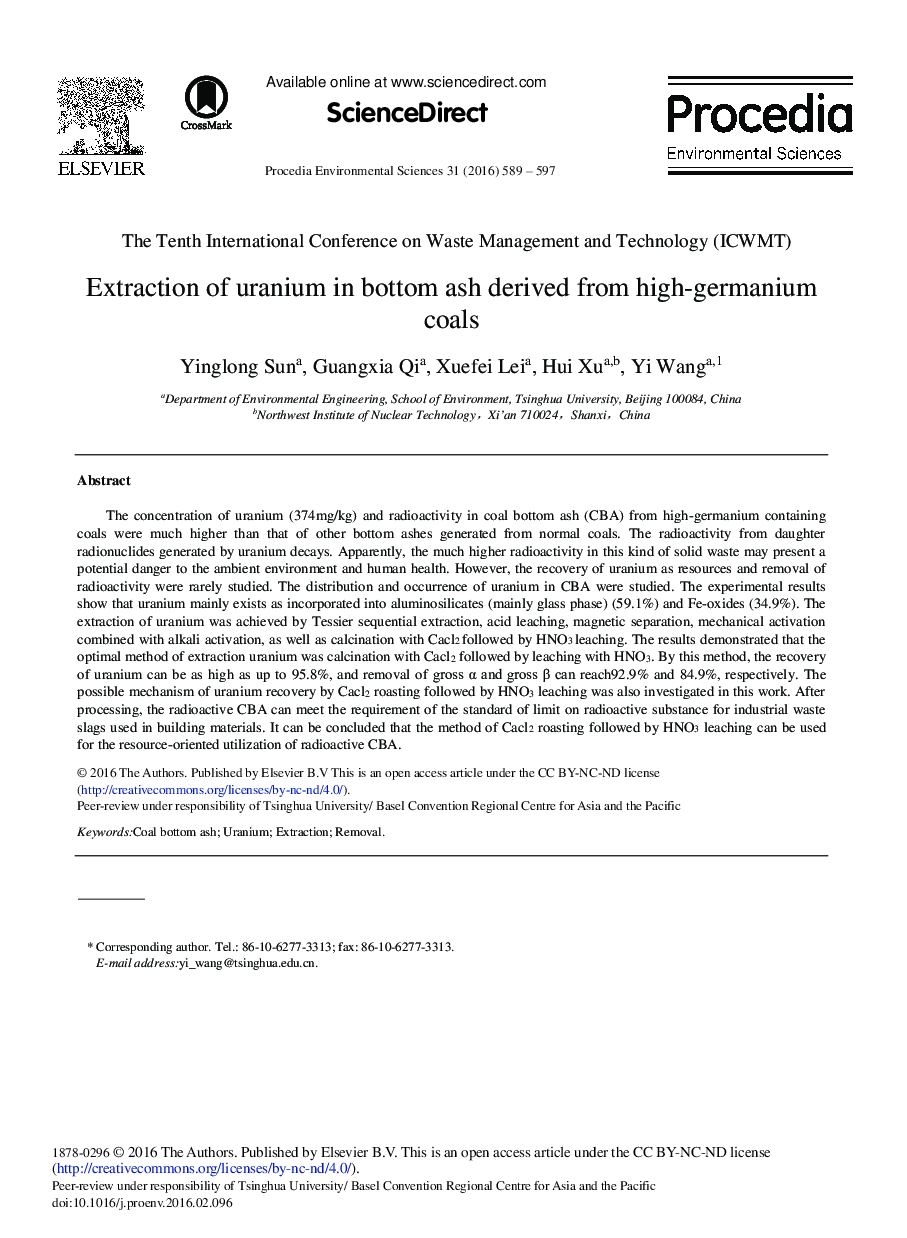| کد مقاله | کد نشریه | سال انتشار | مقاله انگلیسی | نسخه تمام متن |
|---|---|---|---|---|
| 4401590 | 1618613 | 2016 | 9 صفحه PDF | دانلود رایگان |
The concentration of uranium (374mg/kg) and radioactivity in coal bottom ash (CBA) from high-germanium containing coals were much higher than that of other bottom ashes generated from normal coals. The radioactivity from daughter radionuclides generated by uranium decays. Apparently, the much higher radioactivity in this kind of solid waste may present a potential danger to the ambient environment and human health. However, the recovery of uranium as resources and removal of radioactivity were rarely studied. The distribution and occurrence of uranium in CBA were studied. The experimental results show that uranium mainly exists as incorporated into aluminosilicates (mainly glass phase) (59.1%) and Fe-oxides (34.9%). The extraction of uranium was achieved by Tessier sequential extraction, acid leaching, magnetic separation, mechanical activation combined with alkali activation, as well as calcination with Cacl2 followed by HNO3 leaching. The results demonstrated that the optimal method of extraction uranium was calcination with Cacl2 followed by leaching with HNO3. By this method, the recovery of uranium can be as high as up to 95.8%, and removal of gross α and gross β can reach92.9% and 84.9%, respectively. The possible mechanism of uranium recovery by Cacl2 roasting followed by HNO3 leaching was also investigated in this work. After processing, the radioactive CBA can meet the requirement of the standard of limit on radioactive substance for industrial waste slags used in building materials. It can be concluded that the method of Cacl2 roasting followed by HNO3 leaching can be used for the resource-oriented utilization of radioactive CBA.
Journal: Procedia Environmental Sciences - Volume 31, 2016, Pages 589–597
